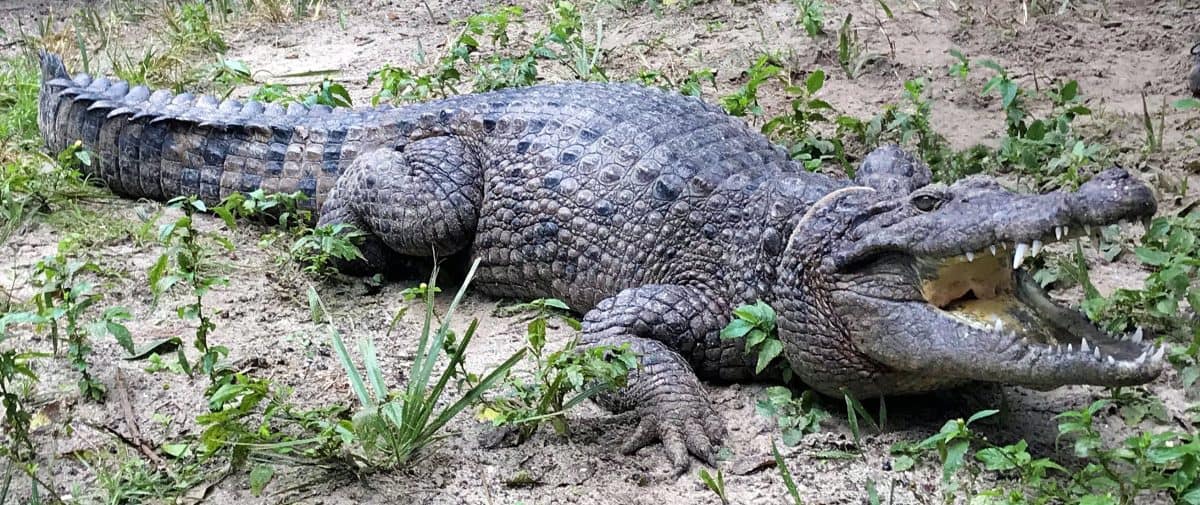
A new species of crocodile 10 feet long that lives in Papua New Guinea has been discovered by scientists
Scientists had known the land was home to a unique species of crocodile since 1928 but they have now discovered there are actually two separate species there.
The discovery was made by studying skulls of the creature in museums and realising they did not match the other species living there.
The two species live on either side of a mountain range which splits the island into north and south.
Researchers were excited by how analysing small details can reveal a big enough difference between animals to separate them as species.
Study senior author Dr Caleb McMahan, from the Field Museum in Chicago, US said: “The nice thing is that here we’ve got differences in the species’ shape, we’ve got ecological differences, they’re separated by a mountain range.
“I think the synthesis of all of that is what really builds the case that these two crocodile entities are very different from each other.
“Lo and behold it’s a brand new crocodile species. Researchers still turn up new species of rats and insects, but most animals bigger than your hand are old news.”
The researchers found such specific differences in the crocs’ skeletons they could even pin down their native river.
They analysed 51 New Guinea croc skulls they found after scouring seven different museums in the US and Australia.
After recording stark differences in the skeletons, they wanted to observe living crocs to check if the variations were visible to the naked eye.
They visited St. Augustine Alligator Farm Zoological Park in Florida, US, home to several ‘novaeguineae’ crocodiles.
Dr McMahan said: “We were able to look at those and say, ‘Oh yeah, this matches the north and this matches the south!’
“After spending so much time on their analysis, the visual differences between the two species are easily recognisable to them in living crocs as well as skull specimens.
“We could even look at a skull that they had there and tell what river it came from.
“So our analyses really did a good job at teasing apart where these things are from. I thought that was super cool.”
The study’s lead author Dr Chris Murray, of Southeastern Louisiana University, in the US, added: “Accessing these collections highlights the beauty of natural history museums.
“We didn’t have to go to Papua New Guinea and collect a bunch of specimens, which would have been incredibly difficult anyhow and very expensive.
“There are new species out there but a lot of them are sitting in drawers and cabinets in museums, and it just takes time to look at them and figure that out.”
The research duo began studying the New Guinea crocs in 2014 in a bid to complete an unfinished investigation launched by the late Dr Philip Hall.
Dr Hall spotted key differences in the way the two groups of crocs nest and mate but died before he could confirm his suspicions.
The pair decided to name the species Crocodylus halli in Dr Hall’s memory.
Dr Murray said: “For us, given the awesome ecological work and investigative work that Dr Hall did on these crocs, it seemed fitting to name this new species after him.”
The team added that understanding the crocs as separate species enables better conservation efforts both to protect the ancient reptiles.
Dr McMahan added: “It could be that when we consider crocs on the whole island, they might be okay, but if we start looking at a species north of the highlands and one south of the highlands you might find more habitat degradation and population threats in one over the other.
“This highlights the importance of attention to ecology and conservation for both lineages.”
The study was published in the journal Copeia.